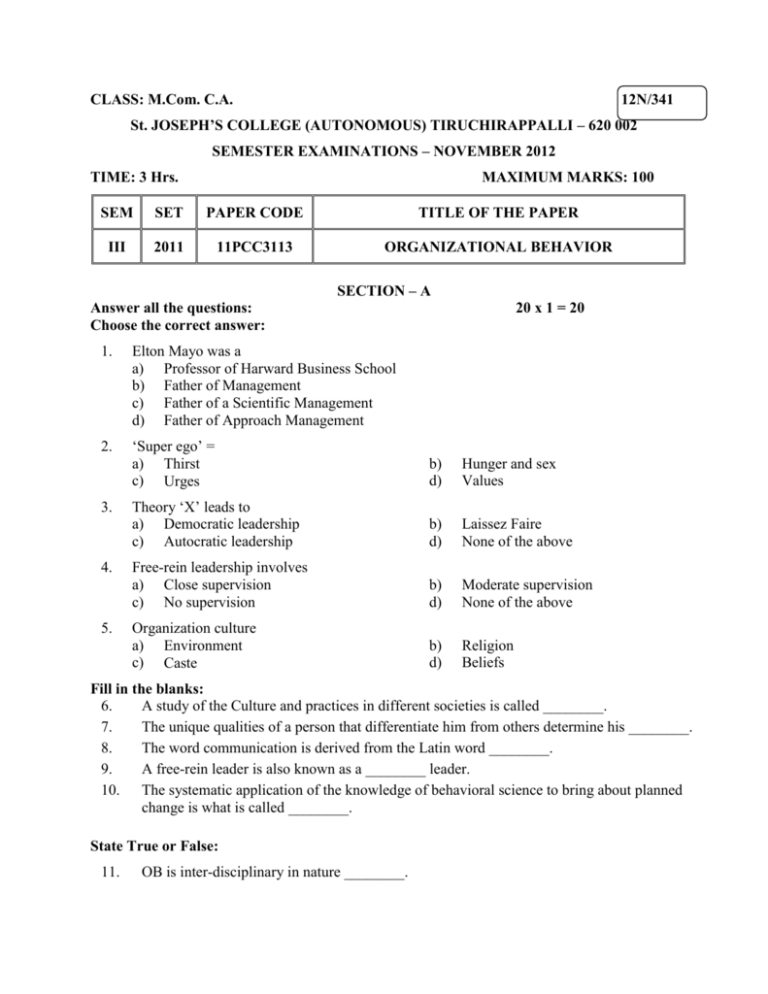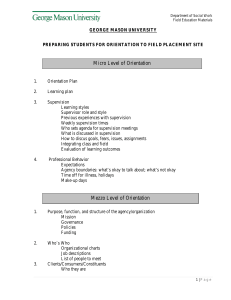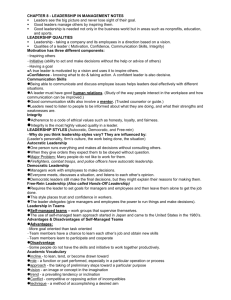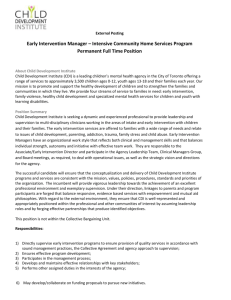ORGANIZATIONAL BEHAVIOR
advertisement

CLASS: M.Com. C.A. 12N/341 St. JOSEPH’S COLLEGE (AUTONOMOUS) TIRUCHIRAPPALLI – 620 002 SEMESTER EXAMINATIONS – NOVEMBER 2012 TIME: 3 Hrs. MAXIMUM MARKS: 100 SEM SET PAPER CODE TITLE OF THE PAPER III 2011 11PCC3113 ORGANIZATIONAL BEHAVIOR SECTION – A Answer all the questions: Choose the correct answer: 20 x 1 = 20 1. Elton Mayo was a a) Professor of Harward Business School b) Father of Management c) Father of a Scientific Management d) Father of Approach Management 2. ‘Super ego’ = a) Thirst c) Urges b) d) Hunger and sex Values Theory ‘X’ leads to a) Democratic leadership c) Autocratic leadership b) d) Laissez Faire None of the above Free-rein leadership involves a) Close supervision c) No supervision b) d) Moderate supervision None of the above Organization culture a) Environment c) Caste b) d) Religion Beliefs 3. 4. 5. Fill in the blanks: 6. A study of the Culture and practices in different societies is called ________. 7. The unique qualities of a person that differentiate him from others determine his ________. 8. The word communication is derived from the Latin word ________. 9. A free-rein leader is also known as a ________ leader. 10. The systematic application of the knowledge of behavioral science to bring about planned change is what is called ________. State True or False: 11. OB is inter-disciplinary in nature ________. 12. 13. 14. 15. Learning does not bring about a change in the behavior of a person. Informal groups are officially created. Referent power refers to the unique qualities of a leader that induce the followers to emulate. Organizational culture does not reflect the values and beliefs of the employees of an organization. Answer in one or two sentences: 16. 17. 18. 19. 20. Psychology Values Grapevine Manager Power SECTION – B Answer all the questions: 21. 22. a. 5 x 7 = 35 b. Define Organizational Behavior and state importance of OB. OR Explain the disciplines contributing to OB. a. Explain the term of Personality. OR 23. 24. b. What are the characteristics of learning? a. b. Explain the Maslow’s need hierarchy theory of motivation. OR Define a group and what are the characteristics of a group. a. What are the functions of a leader? OR 25. b. Distinguish a leader from a manager. a. State the objectives of OD (org. Dev). OR b. What are the characteristics of organizational culture? SECTION – C Answer any THREE questions: 3 x 15 = 45 26. How are the Hawthorne Experiments useful in understanding organizational behavior? 27. Discuss the various factors that influence the formation of attitudes. 28. Explain the barriers to effective communicating suggest remedial measures. 29. Discuss the different types of leadership styles. 30. Discuss the various stags of the OD process. **************











